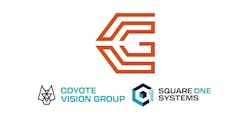Let’s talk about customer service index (CSI) scores. And, before you even say anything, let me tell you that I get it; I know what you’re thinking. After all, I’ve been in a lot of your facilities. I’ve seen and spoken with a lot of you at conferences and events and meetings and just about anywhere a topic like this might come up. I’ve also polled you about this through my company’s “Who Pays for What?” Survey.
So, forgive me, but I’ll stop you before you even say it, because here are the numbers that demonstrate just how the majority of you think about CSI: Nearly 20 percent of all shops use AutocheX, but almost 90 percent of those users do so because it’s a requirement of their direct repair program (DRP) agreements; even more shops use CCC’s Update Plus (right at 49 percent, according to our survey), but 70 percent of those do it because it’s a requirement of their DRP programs.
CSI. DRP. See what I’m getting at here, my friends? There’s this perception out there that CSI is a “DRP thing”; it’s something forced on you for a third-party to monitor you, to tell you how you treat your customers. When all’s said and done, most shop operators have a negative perception of the CSI process.
That perception is wrong. Dead wrong.
Those of you who know me know that I tracked CSI at my repair business for years—and I never once was part of a DRP agreement. It has nothing to do with it. I wanted to know where I stood with my customers at all times, and I wanted an accurate gauge of the quality job my team and I performed.
Nothing is more important than the customer experience, and that’s more true now than ever. It used to be that if something goes wrong and a customer isn’t satisfied, they might tell a few friends or family members; it wasn’t a great situation, but it would be contained to that circle. Today? One bad experience and that customer could go online and post a whole lot of things. That one bad experience could spread like wildfire and greatly affect your business.
There was a study done a couple years ago that said if you have 10,000 customers come through your shop in a year, on average, 70 percent of them will think the experience was satisfactory—nothing amazing, but nothing bad, either. Those people, on average, will tell one person about their experiences. Another 10 percent will be “wowed” by you and think it was just terrific. Even with that great experience, they only tell two people on average. Now, there’s that last 20 percent that had what they viewed as a negative experience for whatever reason; those dissatisfied customers will tell six people. Add that up. Over the course of a year, that’s 12,000 people who heard a negative referral about your business, compared to just 9,000 that would be positive (or possibly just average).
Those negative voices are far stronger than the positive ones. So, how do we control that? You guessed it, my friends: tracking, analyzing and reacting to our CSI scores.
So, let’s start with the basics: I’d always recommend using a third-party CSI vendor for no other reason than it comes off more objective and accurate to customers (and for your own purposes). You get an honest assessment and real-time reporting through most systems.
Now, there’s the question of method. CSI surveys can be administered in three ways: through traditional mail, over the phone, or through text and email.
The first two options are the traditional routes, but each has major drawbacks. Mail is inexpensive but has a very low response rate (which skews results) because it’s inconvenient. Phone surveys used to be the go-to choice, but in today’s connected world a phone call can be very disruptive; maybe you’re calling them when they sit down to dinner or are in a business meeting. That disruption causes low response rates, and on average, it usually takes 4–5 calls to get responses. That amount of pestering causes dissatisfaction and lower scores.
The best option? That’s right: email and/or text messaging. There has been a significant shift toward this method in recent years, and according to my “Who Pays for What?” Survey, nearly half of repairers now use this method. For customers, it’s more convenient; they can choose when they respond (CCC reports that 8 percent of consumers respond between midnight and 6 a.m.). For shops, it’s inexpensive (doesn’t require a staff member calling), you get a high response rate (over 35 percent), instant feedback to perform quick service recovery and real-time reporting so you’re not looking in the rearview mirror at bad results.
And about those bad results: You can prevent those, or at the very least, minimize them, by using a couple different techniques.
The first is to think about your CSI survey questions as soon as the customer walks in the door. Ask yourself: How are we greeting the customer? How long do they wait before talking to someone? How clean is the front office? What’s your process for keeping them informed throughout the repair? Are you bagging the car to keep it clean? And, most importantly, do you have a thorough quality-control system in place throughout the repair process? Examine each aspect of your business and think of it in terms of how a customer may rate it.
Second, the questions in your CSI survey use very specific language, right? Let’s use that to our advantage. Your question might read, “Were you kept informed during the repair process?” Notice that it doesn’t say “updated” or ask how many times they were called on the phone. It says “informed.” So, tell the customer, “Mrs. Jones, we will call to inform you on the status of your vehicle each day.” And each time you call, tell her that you are “informing” her, not updating her. You’re planting that word subliminally as you go, so that when she sees it on the survey, it’s fresh in her mind. Look through your survey questions and you can find a number of examples like that; then, tie your language in customer conversations to those key points.
CSI is a big issue; I have a five-hour course that I teach on it, and it’s nearly impossible to cover it all in one column. So, feel free to send me an email for more information on this or any subject. CSI is critical to your business, and will only become more so in the future. I implore you, my friends, to drop the negative perceptions. These are your customers. You need to have a pulse on them.



